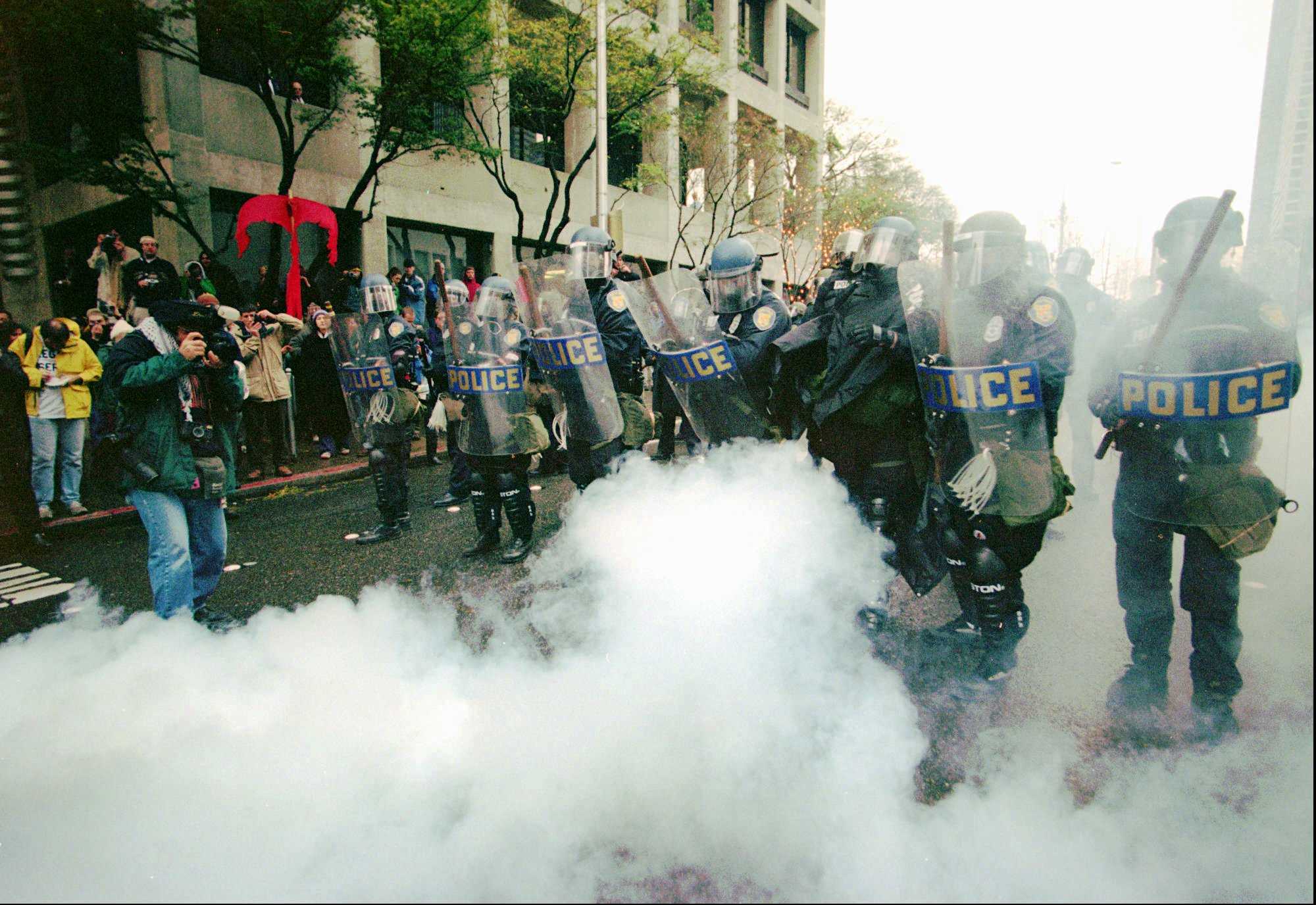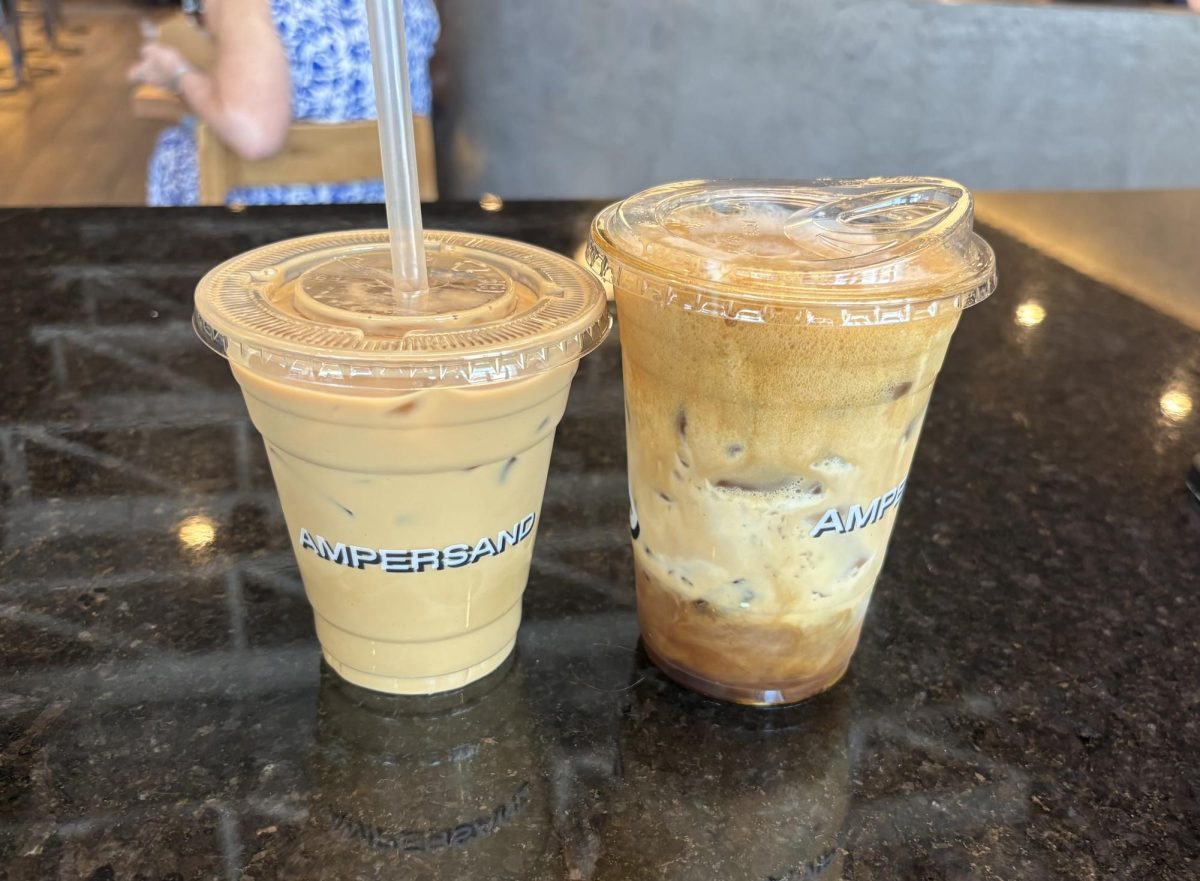 When rioters flooded the streets of Ferguson, Missouri in the fall of 2014, they were met by police officers wearing military grade gear and camouflage, equipped with tear gas, flash-bang grenades, rubber bullets, accompanied by canine units and driving armored vehicles. When school let out in the Mondawmin neighborhood in Baltimore, Maryland this April, students and others at a nearby shopping mall faced police officers, some in full body armor, wearing helmets, and carrying shields, batons and assault rifles. In August of 2013, workers and their children at the Garden of Eden organic farm in Arlington, Texas were woken by the sounds of nearly two dozen SWAT officers storming through the property riding in armoured vehicles, wearing all-black body armor, carrying shields and assault rifles. These weren’t isolated incidents. Police departments across the nation have been quietly arming themselves for battle for decades. Federal programs like the 1033 program (formerly the 1208 program) allow the Secretary of Defense to transfer excess Department of Defense (DOD) property to federal, state and local law enforcement agencies (LEAs) free of charge. According to a White House Report, since 1990 the Defense Logistics Agency (DLA) has given excess military equipment to approximately 8,000 federal and state law enforcement agencies across the nation to the tune of $5.1 billion in total property, including $2.7 billion in the last five years. During the year of 2014, approximately 96 percent (1.8 million pieces) of the property given to LEAs was non-controlled, meaning, according to the report, it doesn’t have military attributes. These items included office furniture, first aid kits, storage containers and lockers to name a few. According to the report, roughly four percent (78,000 pieces) of the equipment was controlled property such as night vision devices, High Mobility Multipurpose Wheeled Vehicles (HMMWVs or Humvees), Mine Resistant Ambush Protected Vehicles (MRAPs), aircraft and watercraft. To date the report shows that there are approximately 460,000 pieces of controlled property possessed by LEAs. The DOD released the records of agencies that obtained equipment through federal programs and NPR has compiled those lists here. Since 2006, Tarrant County has a combined total of over 72 assault rifles, 29 night vision pieces, two mine resistant ambush protection vehicles (MRAPs), and one other armored vehicle, according to the Department of Defense. But Tarrant County isn’t unique. LEAs across Texas have been strategically stockpiling a cache of military weaponry and equipment acquired primarily through the 1033 program. Between 2013 and 2014, police departments across Texas received 105,593 pieces of equipment valued at a total of $146 million, according to the Texas state property book. This equipment ranges from scopes to automatic rifles to submachine guns to MRAPs to bayonets. And this equipment isn’t just going to large cities. Small towns like Cleburne, Texas are taking all the military grade gear they can get. Retired Cleburne Police Chief Terry Powell said the ease of obtaining the equipment encourages departments to take advantage. “It wasn’t particularly a need-based system,” Powell said. “You take departments in cities of 20 thousand and you have MRAPs. But the way the government program works, all you have to do is apply for it and pick it up.” To receive property through the 1033 program, LEAs have to submit a request that indicates what each item will be used for. Once an application is approved the property must be used within a year. Fort Worth Police Lieutenant and member of FWPD’s training division Bryan Jamison said that departments with a low budget like to take advantage these federal programs. “They’re really expensive pieces of equipment,” Jamison said. “So, if it’s free, of course you’re going to take it and of course you’re going to use it.” However, these federal programs don’t give LEAs training on how or when the equipment can be appropriately deployed. “If you look at Ferguson and those officers, I’ll bet you every single officer had to look at that equipment for a very long time to figure out how to even put it on,” Jamison said. While equipment and weapons like these may be necessary for self-protection in extreme circumstances, easy access and a lack of training have encouraged police to use this heavy gear – explicitly for the use on battlefields – on suburb and city streets. And where speaking out against the police has generally been discouraged, after events like Ferguson and Baltimore, critics and civil libertarians have shown consistent public outrage about the militarization of police forces. Protectors need protection By nature of the job, officers risk their lives to keep the public safe. Programs such as the 1033 program allow police departments to out-train, out-dress and out-gun the people they are trying to arrest. From the 60s through the 90s police were often underprepared and under equipped. Driving a metal Dodge with nothing but a bullet proof vest and a handgun or a shotgun, police were often unprepared when situations turned dangerous.
When rioters flooded the streets of Ferguson, Missouri in the fall of 2014, they were met by police officers wearing military grade gear and camouflage, equipped with tear gas, flash-bang grenades, rubber bullets, accompanied by canine units and driving armored vehicles. When school let out in the Mondawmin neighborhood in Baltimore, Maryland this April, students and others at a nearby shopping mall faced police officers, some in full body armor, wearing helmets, and carrying shields, batons and assault rifles. In August of 2013, workers and their children at the Garden of Eden organic farm in Arlington, Texas were woken by the sounds of nearly two dozen SWAT officers storming through the property riding in armoured vehicles, wearing all-black body armor, carrying shields and assault rifles. These weren’t isolated incidents. Police departments across the nation have been quietly arming themselves for battle for decades. Federal programs like the 1033 program (formerly the 1208 program) allow the Secretary of Defense to transfer excess Department of Defense (DOD) property to federal, state and local law enforcement agencies (LEAs) free of charge. According to a White House Report, since 1990 the Defense Logistics Agency (DLA) has given excess military equipment to approximately 8,000 federal and state law enforcement agencies across the nation to the tune of $5.1 billion in total property, including $2.7 billion in the last five years. During the year of 2014, approximately 96 percent (1.8 million pieces) of the property given to LEAs was non-controlled, meaning, according to the report, it doesn’t have military attributes. These items included office furniture, first aid kits, storage containers and lockers to name a few. According to the report, roughly four percent (78,000 pieces) of the equipment was controlled property such as night vision devices, High Mobility Multipurpose Wheeled Vehicles (HMMWVs or Humvees), Mine Resistant Ambush Protected Vehicles (MRAPs), aircraft and watercraft. To date the report shows that there are approximately 460,000 pieces of controlled property possessed by LEAs. The DOD released the records of agencies that obtained equipment through federal programs and NPR has compiled those lists here. Since 2006, Tarrant County has a combined total of over 72 assault rifles, 29 night vision pieces, two mine resistant ambush protection vehicles (MRAPs), and one other armored vehicle, according to the Department of Defense. But Tarrant County isn’t unique. LEAs across Texas have been strategically stockpiling a cache of military weaponry and equipment acquired primarily through the 1033 program. Between 2013 and 2014, police departments across Texas received 105,593 pieces of equipment valued at a total of $146 million, according to the Texas state property book. This equipment ranges from scopes to automatic rifles to submachine guns to MRAPs to bayonets. And this equipment isn’t just going to large cities. Small towns like Cleburne, Texas are taking all the military grade gear they can get. Retired Cleburne Police Chief Terry Powell said the ease of obtaining the equipment encourages departments to take advantage. “It wasn’t particularly a need-based system,” Powell said. “You take departments in cities of 20 thousand and you have MRAPs. But the way the government program works, all you have to do is apply for it and pick it up.” To receive property through the 1033 program, LEAs have to submit a request that indicates what each item will be used for. Once an application is approved the property must be used within a year. Fort Worth Police Lieutenant and member of FWPD’s training division Bryan Jamison said that departments with a low budget like to take advantage these federal programs. “They’re really expensive pieces of equipment,” Jamison said. “So, if it’s free, of course you’re going to take it and of course you’re going to use it.” However, these federal programs don’t give LEAs training on how or when the equipment can be appropriately deployed. “If you look at Ferguson and those officers, I’ll bet you every single officer had to look at that equipment for a very long time to figure out how to even put it on,” Jamison said. While equipment and weapons like these may be necessary for self-protection in extreme circumstances, easy access and a lack of training have encouraged police to use this heavy gear – explicitly for the use on battlefields – on suburb and city streets. And where speaking out against the police has generally been discouraged, after events like Ferguson and Baltimore, critics and civil libertarians have shown consistent public outrage about the militarization of police forces. Protectors need protection By nature of the job, officers risk their lives to keep the public safe. Programs such as the 1033 program allow police departments to out-train, out-dress and out-gun the people they are trying to arrest. From the 60s through the 90s police were often underprepared and under equipped. Driving a metal Dodge with nothing but a bullet proof vest and a handgun or a shotgun, police were often unprepared when situations turned dangerous.  Bill Mathis served over 30 years in Oklahoma law enforcement. Mathis said the pivotal moment when the police began to shift towards a military mentality was after that 1997 shootout where many officers were shot and had to break into a gun shop to arm themselves. “A lot of officers got shot and had a hard time eliminating those guys,” Mathis said. “We didn’t really have the weapons to deal with that and LAPD was on the forefront of SWAT teams. I think that was the point that we started looking and going through the process of getting different types of weaponry and getting geared up.” With a bloated military and a worsening drug crisis, law enforcement agencies across the country were armed with military surplus by 1999. During the World Trade Organization (WTO) protests in 1999, Seattle Police Chief Norm Stamper said he geared and dressed up officers like storm troopers and marched them down city streets.
Bill Mathis served over 30 years in Oklahoma law enforcement. Mathis said the pivotal moment when the police began to shift towards a military mentality was after that 1997 shootout where many officers were shot and had to break into a gun shop to arm themselves. “A lot of officers got shot and had a hard time eliminating those guys,” Mathis said. “We didn’t really have the weapons to deal with that and LAPD was on the forefront of SWAT teams. I think that was the point that we started looking and going through the process of getting different types of weaponry and getting geared up.” With a bloated military and a worsening drug crisis, law enforcement agencies across the country were armed with military surplus by 1999. During the World Trade Organization (WTO) protests in 1999, Seattle Police Chief Norm Stamper said he geared and dressed up officers like storm troopers and marched them down city streets. 

Categories:
To protect and to serve: The growing militarization of America's police force
Published Dec 28, 2015
The cause of a fire that engulfed a duplex on Lubbock Avenue late Monday night has not been determined, and no injuries have been reported as of early Tuesday morning.
Five fire trucks responded to 911 calls around 10:10 p.m., according to Richard Harrison, fire department spokesperson.



